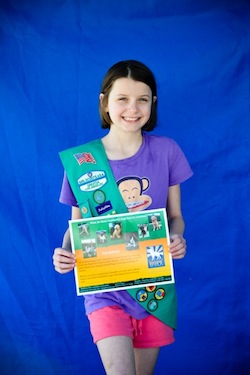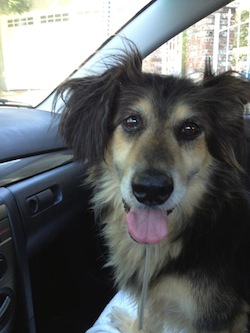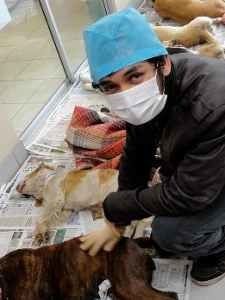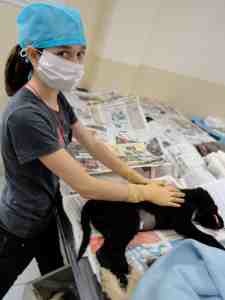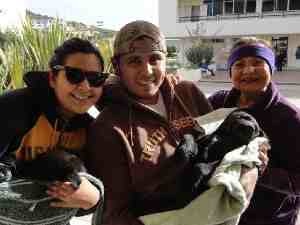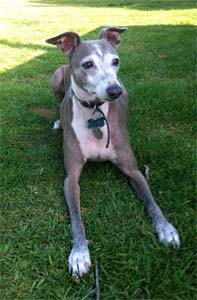The average person may find it difficult to stand up for something they are passionate about and make a difference—especially when people say they are too young or too old. Eleven year old Casey didn’t let that stop her from listening to her heart and making the decision to help animals. She wanted to put her efforts into volunteering at a shelter for her Girl Scout project, but was told by many shelters that she was at least 5 years too young. Despite being discouraged, Casey did not give up. With UHA’s help, Casey finally was allowed to pursue her goal of doing anything she could to make the lives of these animals better.
“For my Girl Scout Bronze Award project, I wanted to do something to help a dog rescue program.” Casey said. “Most of all the rescues or humane societies require volunteers to be 16 or 18. When we took one of our rescue dogs for a check-up at Montrose Pet Hospital, I asked Dr. Mitchell if she had any ideas about who I might be able to work with.
“She helped me find Claudia with United Hope for Animals. Claudia met with my mom and I to share ideas. She thought that it was important to get the word out about the great dogs at the Baldwin Park Shelter, so I decided to make a flyer and post it around La Canada, La Crescenta, Montrose and Pasadena.
“I also wanted to do something for the dogs, so I made treats for volunteers to give them on Glamour Shot day. My parents volunteered to work at the adoption events at Petco so I could go along to help.”
The tragic statistics for animals admitted to the shelter added to Casey’s determination. Without a rescue group to advocate for them, many animals have a mere 4 days at the shelter before they are euthanized. This upsetting information fueled Casey’s desire to change the lives of these pets, and her efforts have grown to be much more than a single project.
Armed with the knowledge she has gained working with UH4A, Casey wants other kids her age to fight for what they’re passionate about, no matter what. According to her mother, she has built valuable communication skills and her confidence in herself has grown.
Casey’s mom, Lisa, shares how this project has affected her daughter:
“It has been wonderful watching Casey find an avenue to share her passion about homeless animals. She spent a lot of time online and with Claudia learning about how United Hope for Animals works. Spending time at the Baldwin Park facility opened her eyes to the fact that there are many, many people who do not care as deeply as she does about their pets. She was shocked by the number of people in line to surrender their animals.
“Casey has become a true advocate for these animals. She keeps track of the animals that are available and follows up to see who has been adopted or rescued. She sends emails and talks to family and friends about the importance of spaying/neutering and adoption. She even collected money for United Hope for Animals in lieu of birthday gifts this year.
“United Hope for Animals put Casey’s donation in use to help pay for Buster’s medical bills. Buster is a lovable guy who was suffering from an easily-preventable infection of the anal glands. Read more about Buster’s story here.
“Casey plans to work on her Girl Scout Silver award this year through United Hope for Animals again. She looks forward to becoming an official volunteer at the Baldwin Park Shelter when she turns 16. Until then, she is determined to continue helping with the adoption events and raising awareness about the problem of homeless pets.
“How many eleven year olds do you know who would ask for donations instead of presents for their birthday? How many kids would spend so much of their time helping others? Change always starts with one person listening to their heart. It doesn’t matter who they are, how old they are, or where they come from. In this case, the power and passion of one child has made a difference in the lives of so many animals in need.”
United Hope for Animals is proud to help Casey help animals in need.Thank you, Casey, for being such a terrific teammate of United Hope for Animals!

